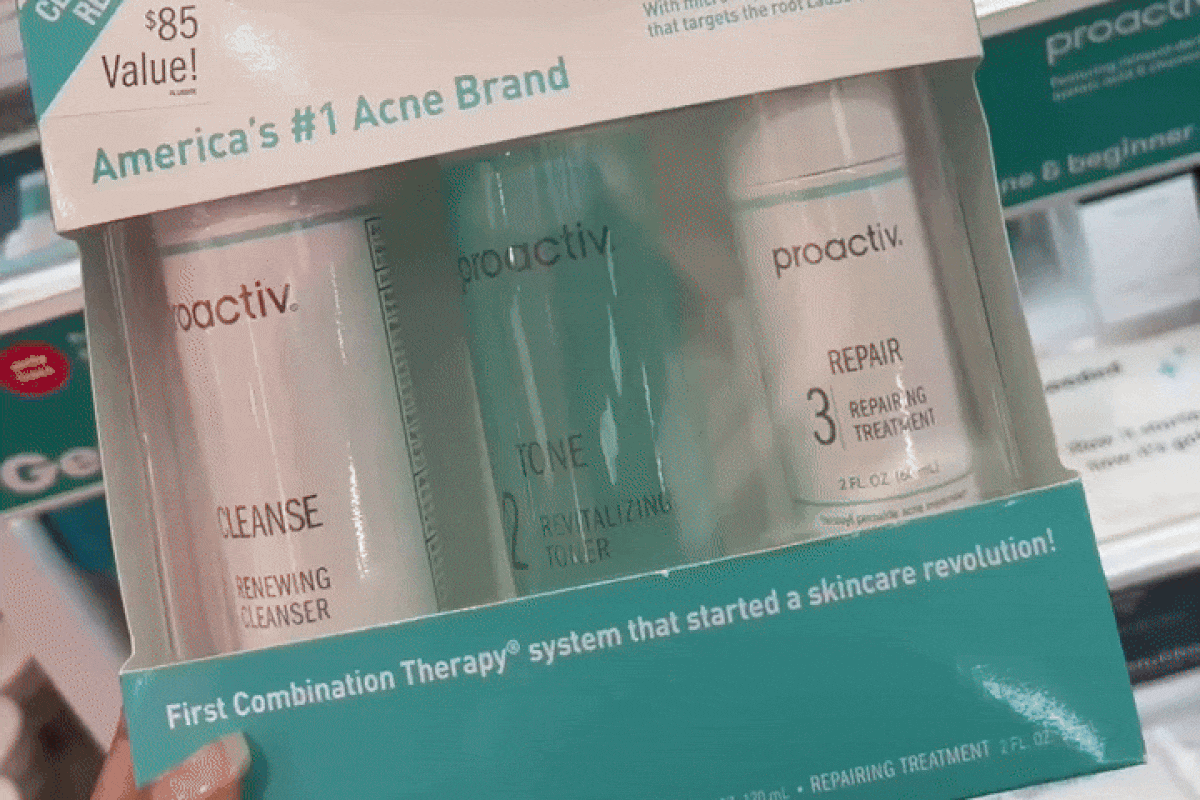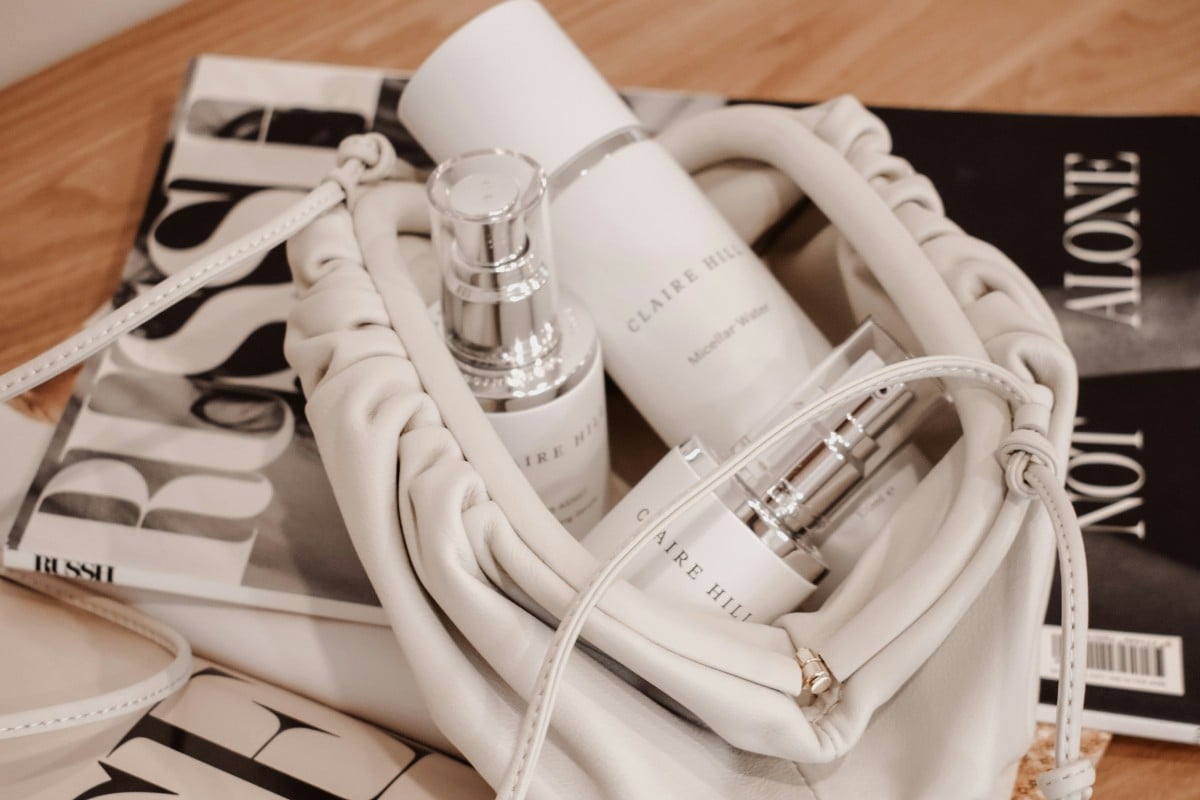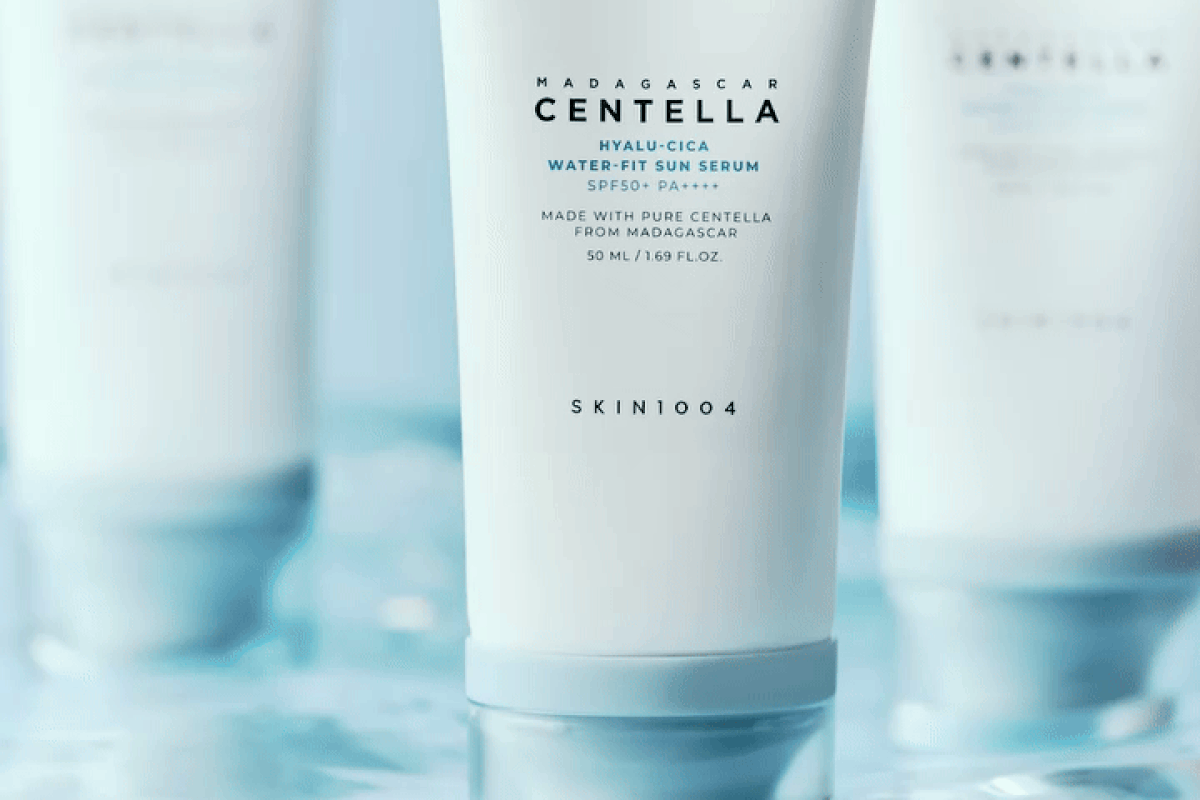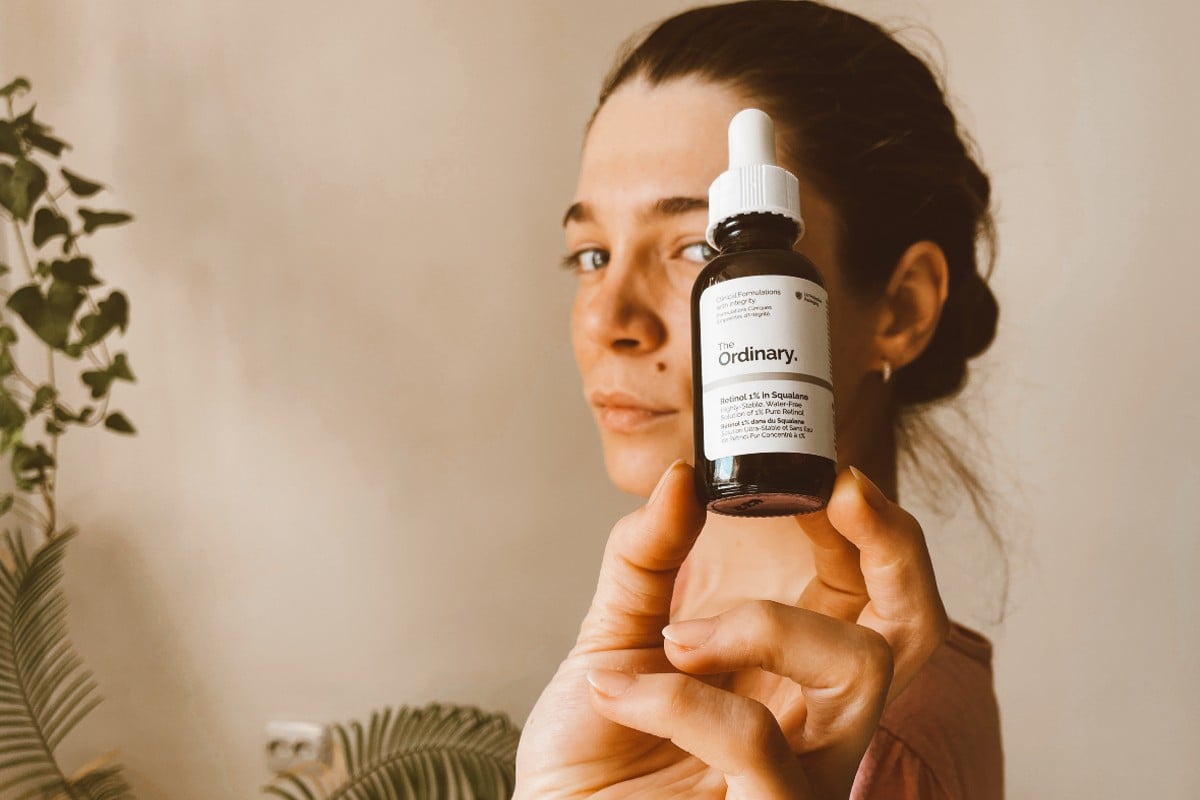Fact-checked by Ana Vasilescu.
- Polyglutamic acid is a peptide with hydrating and anti-aging properties.
- It can be made synthetically or extracted naturally from fermented soybeans
- Polyglutamic acid can help your skin retain moisture and smooth wrinkles.
- It’s gentle and can be used twice daily
- Polyglutamic acid can be mixed with most skincare actives, including hyaluronic acid, retinol, niacinamide, glycolic acid, and vitamin C
Ferments are one of the best Asian beauty innovations, and polyglutamic acid is one that stands out. While it’s not the most popular ingredient in the skincare scene, this guy is the OG of moisturizers and even rivals the likes of hyaluronic acid and other beloved humectants. It could soon spice up your beauty routine. So what drives this humble ferment’s claim to fame, and why polyglutamic acid deserves a spot on your skincare cabinet?
What is polyglutamic acid?
Polyglutamic acid is a hydrating ingredient that can boost your skin’s ability to attract and retain moisture. It’s a naturally occurring molecule that acts like a mini sponge, drawing moisture towards it and locking it in.[1]
Chemically speaking, polyglutamic acid is a polypeptide (that’s a fancy word for a chain of amino acids). It has incredible humectant abilities, meaning it’s very good at retaining moisture. To put this into perspective, polyglutamic acid can hold up to 5,000 times its own weight in water. This is about four times the water-binding capacity of hyaluronic acid.[2]
We should mention that polyglutamic acid has too large molecules to penetrate the skin, which means it’s most effective for surface-level hydration. Instead of sinking into the skin, it sits on the surface, where it forms a thin film that seals in moisture and ensures that the skin doesn’t lose too much water through the pores.[3]
How is polyglutamic acid made?
In science terms, polyglutamic acid is made by connecting multiple molecules of amino acids (specifically glutamic acid molecules) together. This makes it a big chain or, to use a fancy term, a polypeptide.
Where does polyglutamic acid come from?
You might be thinking polyglutamic acid is made in a lab. And yes, sometimes it is. But polyglutamic acid can also be naturally made by some bacteria, especially when they munch on soybeans. After these bacteria produce polyglutamic acid, it’s then cleaned and purified, so it’s perfect for use in things like skincare products.
What are the benefits of polyglutamic acid for the skin?
- Increases hydration: Polyglutamic acid is a humectant with water-binding and moisture-retaining properties. Because it attracts water and seals it at the same time, it’s one of the most effective ingredients to hydrate the skin.
- Boosts NMFs: It was found that topical use of polyglutamic acid can increase the production of natural moisturizing factors (NMFs) such as pyrrolidone carboxylic acid (PCA) and lactic acid—all needed to maintain overall skin integrity.[3]
- Anti-aging: PGA is especially effective at taming fine lines resulting from dehydration. Its film-forming properties also have a plumping effect on the skin and can help diminish the appearance of wrinkles by making them appear fuller. Interestingly, PGA improved the hydration and elasticity of the skin more than collagen and hyaluronic acid during a 28-day period study.[4]
- Speeds up healing: Polyglutamic acid has healing effects and is used in medicine to accelerate the recovery of wounds and burns.[3]
- Reduces hyaluronic acid degradation: PGA inhibits the enzyme hyaluronidase, a big baddie for age-related hyaluronic acid loss.[5] The result is better moisture retention and faster healing for healthier skin.
- Primes the skin: PGA makes a good primer for other products, like vitamin C or retinol serum. It improves the efficacy of active ingredients in skincare formulations by allowing them to penetrate the skin more effectively.
FIY, polyglutamic acid is also eco-friendly and biodegradable, making it a sustainable choice for conscious consumers.[6]
Side effects and other concerns
Polyglutamic acid is a fairly safe ingredient that’s gentle, stable, and non-irritating. It’s not been shown to react with other skincare products, and its gentle hydration pairs well with more sensitizing actives. Reactions are rare; however, possible side effects caused by polyglutamic acid can include itchiness and redness. We recommend patch-testing new products, especially since dehydrated skin is more at risk for sensitivity and reactions.
Living in a dry climate? There is a chance that polyglutamic acid will have the opposite effect and dry out your skin. Due to its humectant nature, it can draw moisture from the deeper layers of the skin to the surface, only to evaporate and leave the skin even more dehydrated. This happens when the humidity is low (below 70%), which is more likely to happen in winter.
But don’t quit the idea of using polyglutamic acid products.
Even if you live in a dry climate you can benefit from this humectant without risking drying your skin. Simply apply a cream or ointment with occlusives after your PGA product. Occlusives like petrolatum, shea butter, and squalane coat the skin’s surface with a protective layer to reduce transepidermal water loss and seal moisture. Although PGA can act as a lightweight occlusive on its own, it’s better to follow with other moisture sealers to ensure every drop of water is locked in.
How to use polyglutamic acid
To get the most out of this humectant, use serums infused with 0.2-3% polyglutamic acid. It’s best to apply PGA to a moist face. This is especially vital in dry climates with low humidity or during winter when your skin needs extra hydration. Use polyglutamic acid during the moisturizing phase of your skincare routine. This will enhance the absorption of your creamy products and maximize hydration.
You can also use PGA serums to do skin flooding, along with other humectants like hyaluronic acid. This is a technique that implies saturating the skin with intense moisture. It’s basically done by applying a serum with humectants and following it with an emollient cream or occlusive moisturizer. This gives your complexion maximum hydration and locks it in for long-lasting effects.
What can you pair polyglutamic acid with?
Super-compatible with your current routine, polyglutamic acid plays well with just about every product. Day or night, this hydrator can boost the absorption and activity of some of your favorite actives, including vitamin C and exfoliants like lactic and glycolic acids.
Pair polyglutamic acid and niacinamide to lock in moisture and enhance skin elasticity. For intense moisture, use polyglutamic acid with hyaluronic acid. Don’t miss out on the peptide’s healing effects; they are a game-changer when combined with polyglutamic acid. Finally, PGA and retinol work wonders to minimize retinol irritation and intensify that new skin glow.
Who should use polyglutamic acid?
Polyglutamic acid in skincare is universal and is the kind of ingredient that is suitable for everyone. It works great on dry, dehydrated, and tight skin, as well as on mature skin looking to diminish fine lines and wrinkles. For those with sensitive skin, polyglutamic acid can be a good alternative to hyaluronic acid and other hydrating ingredients that may cause irritation or redness. It goes well on oily complexions prone to acne, too, since it’s lightweight, non-sticky, and doesn’t clog pores.
We answer all your questions about polyglutamic acid
- Is polyglutamic acid better than hyaluronic acid?
While both function as humectants and help seal hydration in the skin, polyglutamic acid is thought to hold five times more moisture than hyaluronic acid. However, that doesn’t necessarily mean polyglutamic acid is better than hyaluronic acid, and there’s no study to compare them directly. For the best results, use both ingredients together to boost hydration levels to the maximum.
- Can you use polyglutamic acid every day?
Yes, polyglutamic acid gives the best results when used twice a day, in your morning and nighttime skincare routine.
- Does polyglutamic acid repair the skin barrier?
Polyglutamic acid protects the barrier function by forming a protective layer on the outermost skin layer to reduce water loss.
- Is polyglutamic acid good for sensitive skin?
PGA restores the moisture barrier and reduces inflammation, which can be especially beneficial for sensitive skin prone to redness.
Read next: 10 Best Polyglutamic Acid Products for Long-Lasting Hydration
Footnotes
Women’s Concepts uses reliable sources, including dermatologists’ insights, clinical trials, and scientific journals, to find accurate information and support all the facts shared in our articles. All statements and claims have clear and legit references. Read our editorial policy to learn more about our sources of information, our process of researching and fact-checking the content, and how our team strives to keep all articles updated, completed, and trustworthy.
- Ogunleye, Adetoro, et al. “Poly-γ-glutamic acid: production, properties, and applications.” Microbiology 161.1 (2015): 1-17.
- Lee, Na-Ri et al. “In vitro evaluation of new functional properties of poly-γ-glutamic acid produced by Bacillus subtilis D7.” Saudi journal of biological sciences vol. 21,2 (2014): 153-8. doi:10.1016/j.sjbs.2013.09.004
- Natalie Ben-Zur, Natto Biosciences, Daniel M. Goldman. “γ-Poly glutamic acid: a novel peptide for skincare.” Cosmet. Toilet.
- Choi JC, Uyama H, Lee CH, Sung MH. Promotion Effects of Ultra-High Molecular Weight Poly-γ-Glutamic Acid on Wound Healing. J Microbiol Biotechnol. 2015 Jun;25(6):941-5. doi: 10.4014/jmb.1412.12083. PMID: 25791849.
- Moon Hee Sung, Chung ParkJae Chul Choi, Hiroshi Uyama, So Lim Park. Hyaluronidase Inhibitor Containing Poly-Gamma-Glutamic Acid as an Effective Component. 2005
- Bajaj I, Singhal R. Poly (glutamic acid)–an emerging biopolymer of commercial interest. Bioresour Technol. 2011 May.


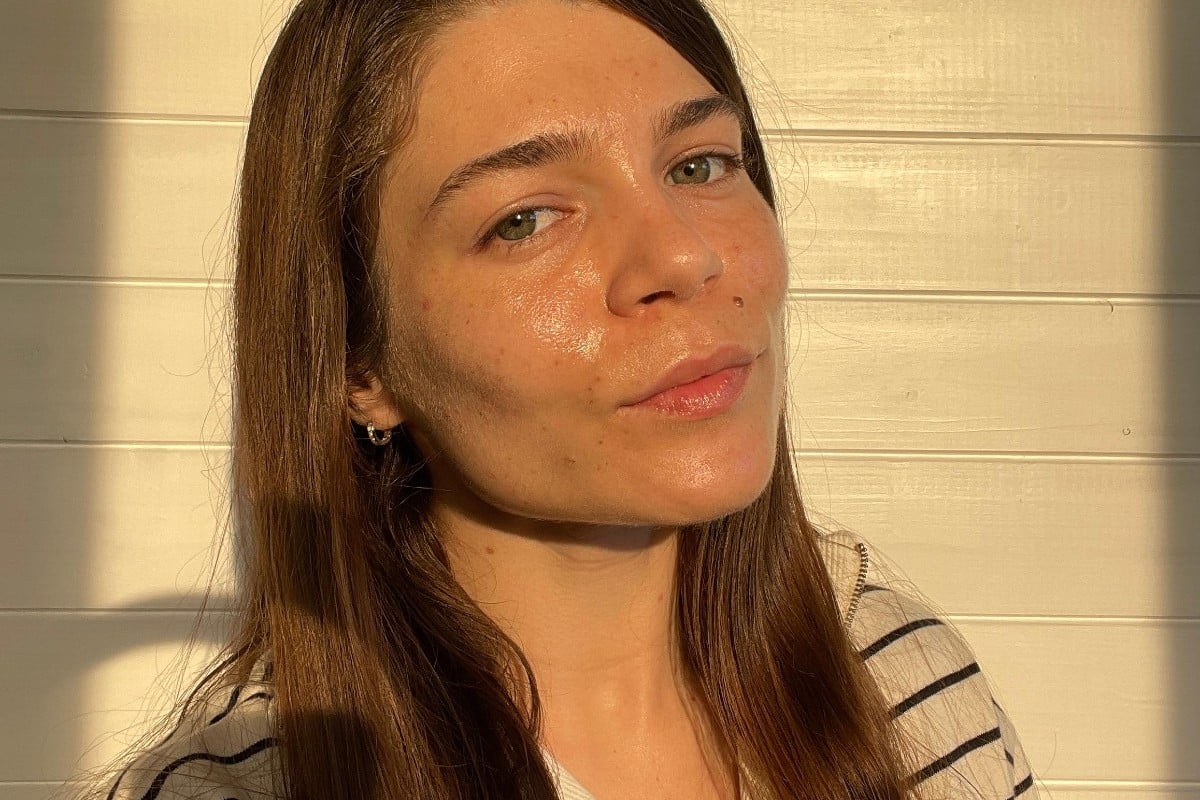

![Does resveratrol in red wine benefit your skin? While sipping on a glass of red wine can be a delightful experience, relying on it for skincare benefits is not the best idea. Sure, red wine contains a smidge of resveratrol, but let's put things into perspective. The concentration of resveratrol in red wine is relatively low. Red wines, specifically Pinot noir from France, typically contain 0.361-1.972 mg of resveratrol per liter.[8] To hit that reference dose of 500mg of resveratrol, you'd need to drink a lot of wine. We're talking about downing anywhere from 100 to 1000 glasses per day. It's a scene straight out of a wine lover's wildest dreams, but definitely not the healthiest approach. Resveratrol Benefits for Skin](https://womensconcepts.com/wp-content/uploads/2022/03/Resveratrol-Benefits-for-Skin.jpg)

